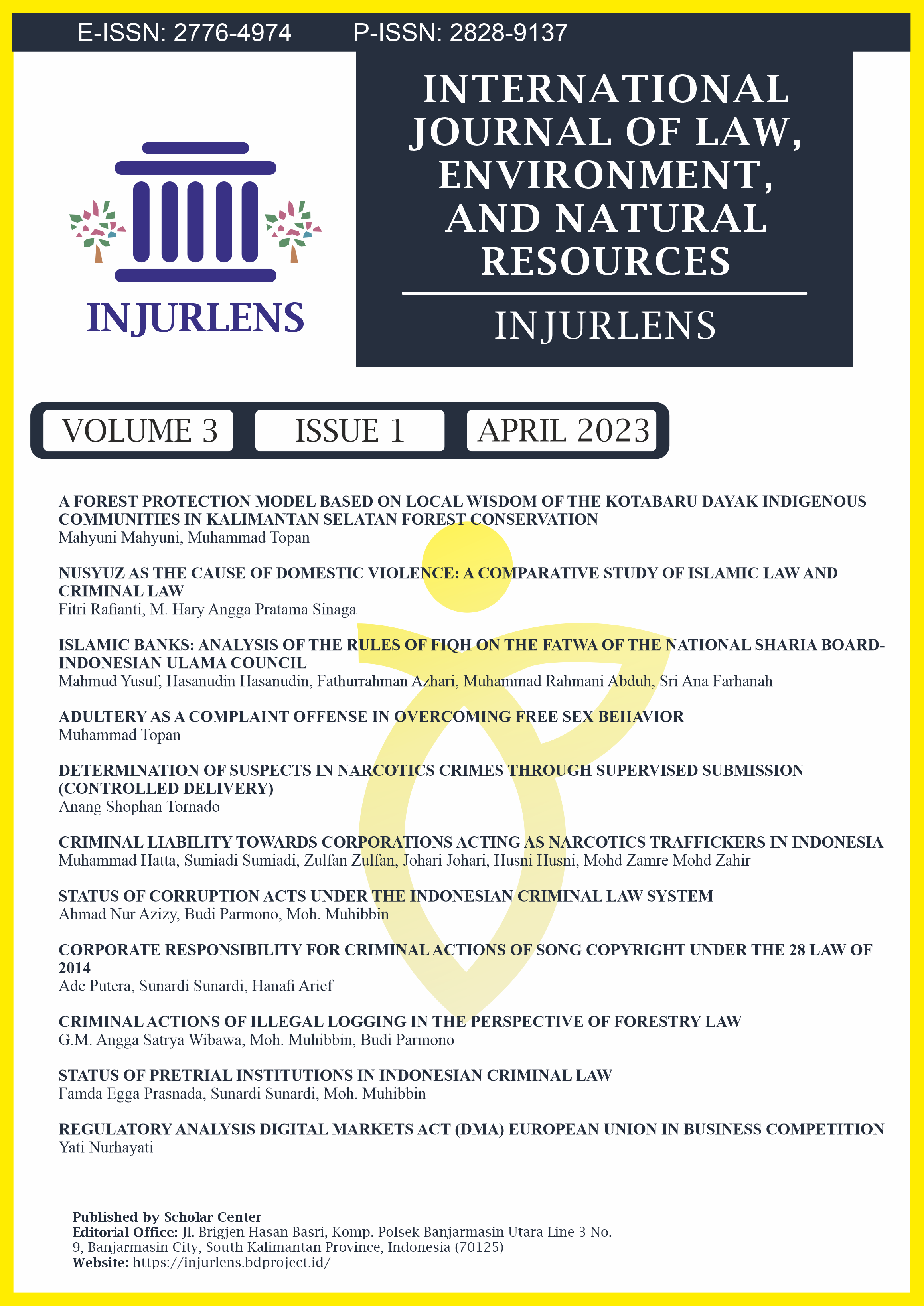Optimize The Authority To Judicial Review By The Supreme Court
DOI:
https://doi.org/10.51749/injurlens.v3i1.94Keywords:
Supreme Court, legislation ordinance, material liberties test, judicial review.Abstract
Determined of Supreme Court Regulation Number 1 of 2011 about the Right to Test Material, where one of the substances remove strained period the submission deadline Applications for approval were previously limited to 180 days after regulation laws and regulations determined as previously regulated in the Regulations Supreme Court Number 1 of 2004 should be welcomed as a positive step in in order to make the authority to review statutory regulations effective by Supreme Court. In the future, in order to further optimize authority Therefore, the Supreme Court Regulations Concerning the Right to Judicial Review need to be revised through the establishment of Supreme Court Regulations regarding regulatory review regulations that include the right to material review and the right to formal review, because However, the Supreme Court does not only have the authority to carry out material tests also formal testing where the two understanding authorities are better known as the term judicial review authority.
Downloads
References
Asshiddiqie, Jimly. 2006, Model-Model Pengujian Konstitusional di Berbagai Negara, Cetakan Ketiga, Jakarta: Konstitusi Press.
Falaakh, Mohammad Fajrul. 2001, Skema Constitutional Review di Indonesia: Tinjauan Kritis, Majalah Berkala Mimbar Hukum Fakultas Hukum UGM, Edisi Juni 2001, Nomor 38/VI/2001.
Fatimah, Siti. 2005, Praktik Judicial Review di Indonesia: Sebuah Pengantar, Yogyakarta: Pilar Media.
Fuady, Munir. 2009, Teori Negara Hukum Modern (Rechtstaat), Bandung: PT.Refika Aditama.
Gultom, Lodewijk. 2007, Eksistensi Mahkamah Konstitusi dalam Struktur Ketatanegaraan di Indonesia: suatu kajian dari aspek tugas dan wewenangnya, Bandung: Utomo.
Latif, Abdul, dkk. 2009, Buku Ajar Hukum Acara Mahkamah Konstitusi, Yogyakarta: Total Media.
Mertokusumo, Sudikno. 2009, Penemuan Hukum, Sebuah Pengantar, Cetakan Keenam, Yogyakarta: Liberty.
Moh. Mahfud MD. 2010, Membangun Politik Hukum, Menegakkan Konstitusi, Jakarta: Raja Grafindo Persada.
Ranggawidjaja, Rosjidi dan Perwira, Indra. 1996, Perkembangan Hak Menguji Material di Indonesia, Bandung: Cita Bhakti Akademika.
Siallagan, Haposan dan Simamora, Janpatar. 2011, Hukum Tata Negara Indonesia, Medan: UD. Sabar.
Siahaan, Maruarar. 2010, Uji Konstitusionalitas Peraturan Perundang-undangan Negara Kita: Masalah dan Tantangan, Jurnal Konstitusi, Volume 7 Nomor 4, Agustus 2010.
Simamora, Janpatar. 2011, Singkronisasi Kewenangan Judicial Review di Indonesia, Tesis, Yogyakarta: Program Pascasarjana Fakultas Hukum UGM.
Sutiyoso, Bambang. 2009, Tata Cara Penyelesaian Sengketa di Lingkungan Mahkamah Konstitusi, Yogyakarta: UII Press.
Regulation
The 1945 Constitution of the Republic of Indonesia.
Constitution of the Republic of the United States of Indonesia 1949.
Provisional Constitution of 1950.
Law Number 8 of 2011 concerning Amendments to Law Number 24 of 2003 concerning the Constitutional Court.
Law Number 5 of 2004 concerning the First Amendment to Law Number 14 of 1985 concerning the Supreme Court.
Law Number 3 of 2009 concerning the Second Amendment to Law Number 14 of 1985 concerning the Supreme Court.
Constitutional Court Regulation Number 6/PMK/2005 concerning Procedure Guidelines in Legal Review Cases
MA Regulation Number 1 of 2011 concerning the Right to Material Review.
Downloads
Published
How to Cite
Issue
Section
License
Copyright (c) 2023 Janpatar Simamora

This work is licensed under a Creative Commons Attribution-NonCommercial-ShareAlike 4.0 International License.
Injurlens is licensed under a Creative Commons Attribution-NonCommercial-ShareAlike 4.0 International License
Articles in Injurlens are Open Access articles published under the Creative Commons CC BY-NC-SA License This license permits use, distribution and reproduction in any medium for non-commercial purposes only, provided the original work and source is properly cited. Any derivative of the original must be distributed under the same license as the original.

